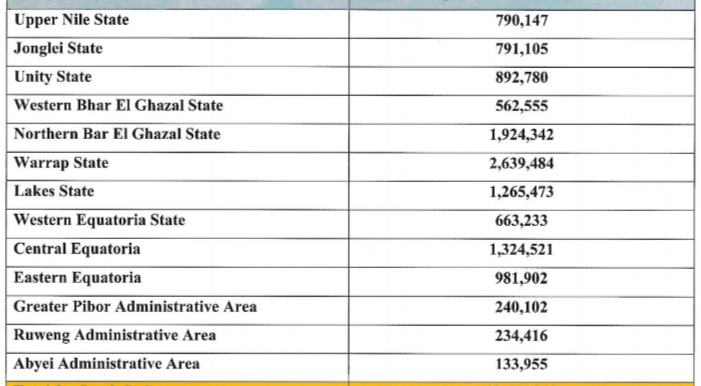The South Sudan National Bureau of Statistics (SSNBS) on Thursday released a new Population Estimation Survey (PES) which assessed the country’s population at 12.4 million.
According to Isaiah Chol, the chairperson of SSNBS, the survey was conducted starting May 2021 and is based on satellite imagery and inventory gathered in collaboration with United Nations Population Fund (UNFPA).
Chol said the population survey was conducted across the ten states and three administrative.
“In 2021, the Government of South Sudan through SSNBS conducted PES and covered all the attributes of micro-census with all characteristics,” he said.
The SSNBS chairperson said the purpose of the PES is to generate reliable population estimates on the population density and basic demographic characteristics for all levels of administration in the country.
“The purpose of this PES is to generate indicators for monitoring and evaluation of programs and final population and housing census and house survey as well as demographic dividends,” he said.
Chol thanked the UN agencies for helping in conducting the PES.
According to the population estimates survey, 52.9 percent of the population are females and 47.1 percent males while the population of youth stands at 77 percent.
The Country’s last population and Housing Census was conducted before the independence of South Sudan and put the region’s population at 8.26 million.
For his part, Ademola Olajide, the United Nations Population Fund (UNFPA) country representative, said they believe the population is not about numbers but people, saying for people to be counted, there must be population and Housing survey.
According to Olajide, the current PES is just a starting process as the country is expected to conduct elections on December 2024.
“We will use this data for planning, we will use it for policy design and even to measure progress, and it can become a baseline for the interventions we take,” he said. “The data we have is statistically sound, in terms of the techniques and methodology. What remains in contention is a political decision as to whether to use this for the census or not.”
“This PES was conducted with the support of UNFPA and the UN system here in South Sudan, funded by our generous donors, under the leadership of the SSNBS,’ Olajide added.




